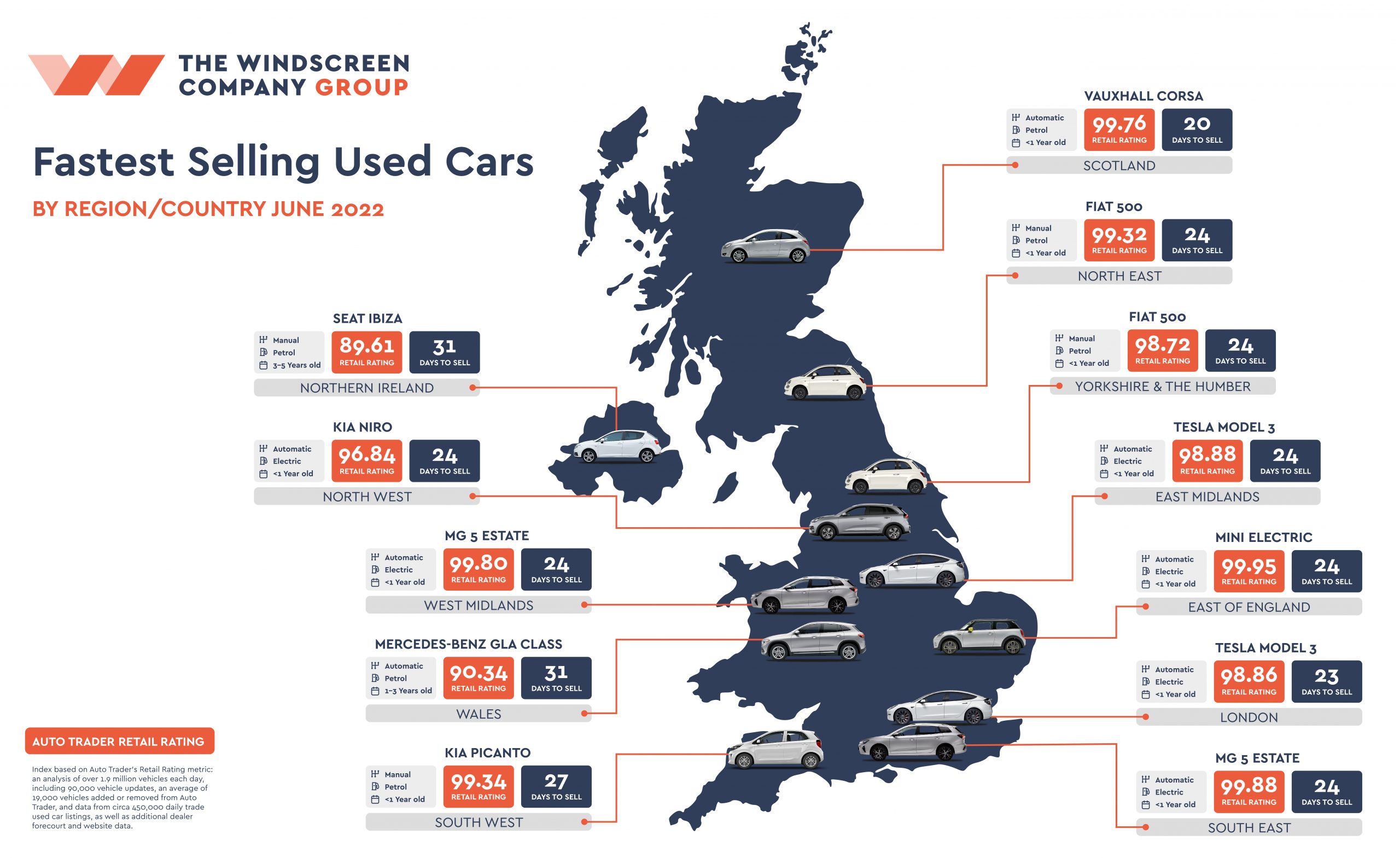We are hiring! Are you an experienced technician? Join our outstanding team »
- Any time •
- Any vehicle •
- Any glass •
Road to 2035
24 hour mobile service, we come to you Call us on 08009 981 068
All makes & models
Rest-assured, we have you covered
Same day available
Need it fixing today? No problem!
We deal with insurance
To keep the process simple
Trade accounts welcome
Apply today
The Road to 2035: EV Revolution for the UK
In 2020, the British government announced a ban on the sale of all new petrol and diesel cars would be introduced in 2030 (updated to 2035). This decision has been made in an attempt to dramatically decrease the UK’s carbon footprint, make British roads more environmentally friendly and, hopefully, play a crucial role in the planet’s overall fight against the climate crisis.
As a result, electric cars are inevitably set to become more commonplace on our roads.
Furthermore, huge rises in fuel prices in 2022 and the cost of living crisis have also seen consumers change their habits.
With all this in mind, the team here at The Windscreen Company has put together The Road to 2035: EV Revolution for the UK.
This guide will keep you up-to-date with all the latest news as the country heads towards the 2035 deadline. It’ll contain chapters on a whole host of topics relating to the electric car industry, providing advice, guidance and information to keep you informed on all of the latest developments.
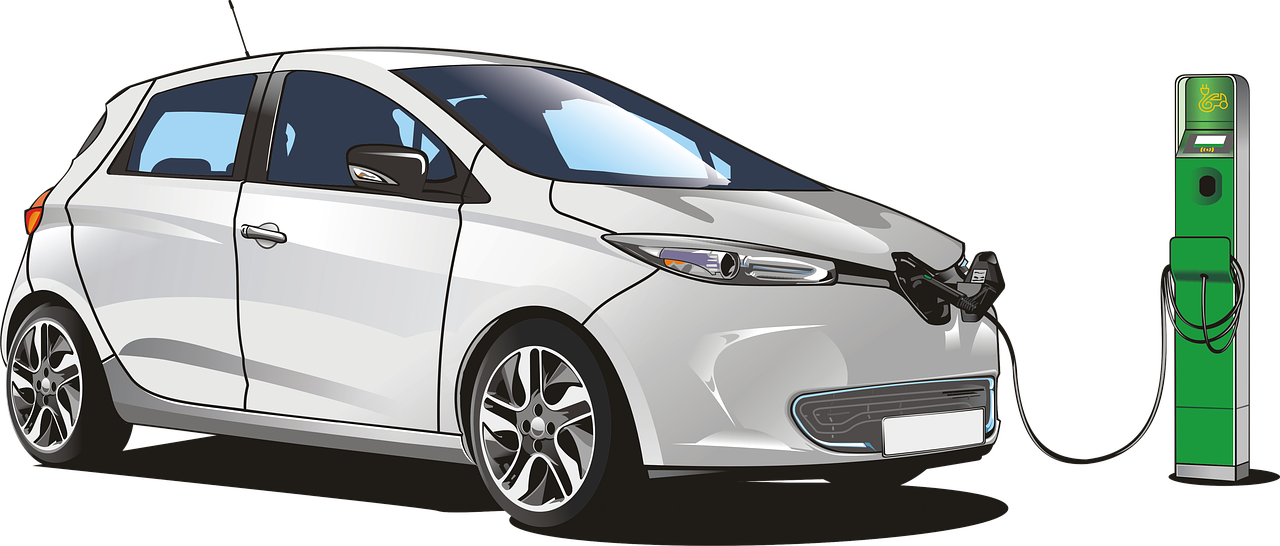
Chapter 1 – Petrol vs electric cars – the stats
The ban on the sale of new petrol and diesel cars will be introduced in the UK in 2035. While second-hand sales will not be affected, the ban is still likely to have an impact on car sales.
The hope is that more people will be encouraged to purchase electric vehicles that are far better for the environment. While the ban is still a few years away, there have already been some notable changes in consumer habits.
Leading automotive sales website, Autotrader, has been comparing statistics of petrol and electric cars, taking a close look at how sales and interest have differed since the government’s announcement.
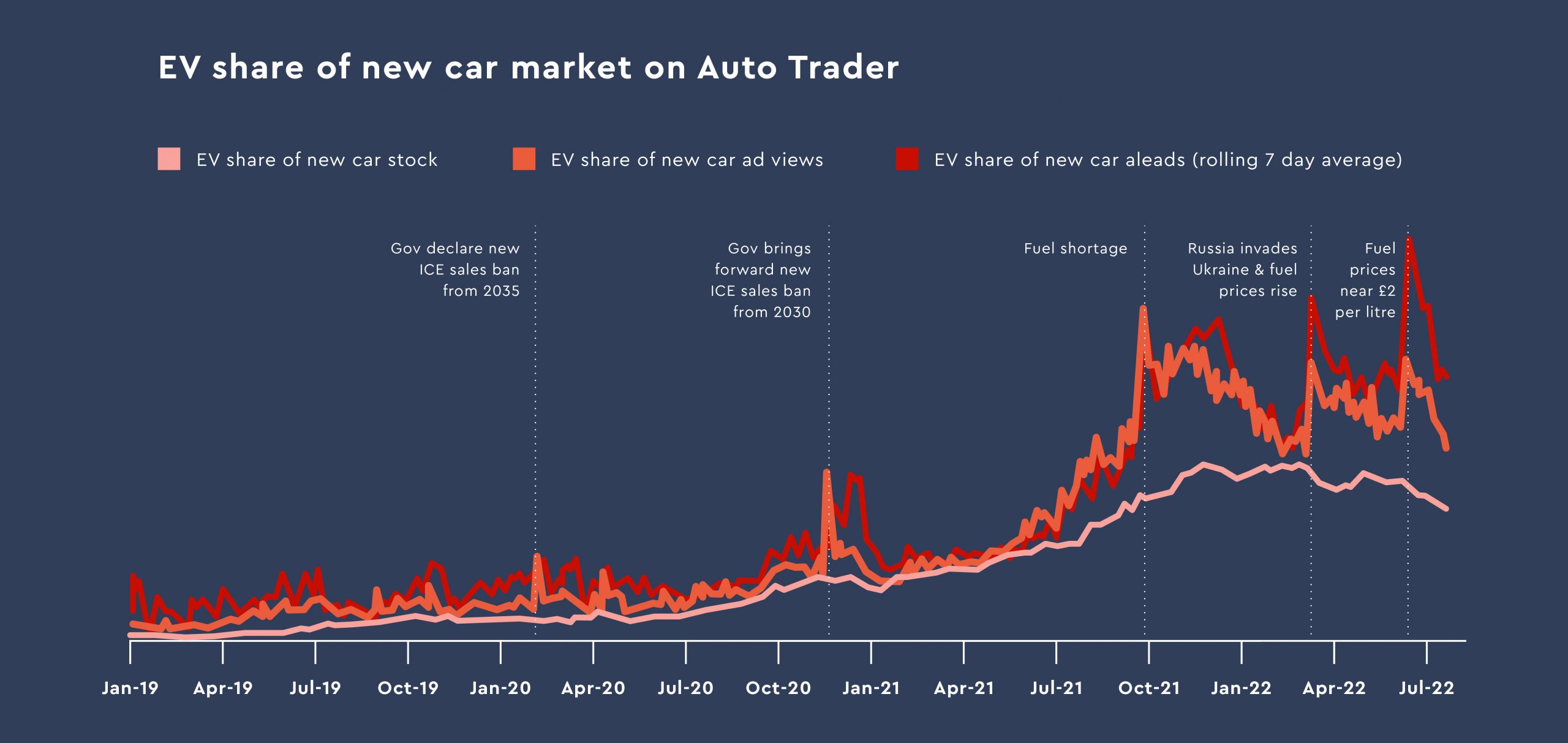
EV share of the new car market
Since the announcement of the ban on new petrol and diesel vehicles, there has been a clear increase in interest in electric vehicles. This is evidenced by the above graph that shows the steady increase of new electric vehicle stock, the number of people viewing electric vehicle car adverts and the average amount of leads relating to electric vehicles per week.
Initially, the new car ban was set to come into force in 2035, but in October 2020 the ban was brought forward to 2035. This sparked a spike in EV leads, but the major factors that have seen an increase in stock, ad views and weekly leads have been global and domestic considerations. For example, Russia’s invasion of Ukraine in February 2022 that hiked fuel prices with average fuel prices in the UK reaching a staggering £2 per litre in July 2022.

EVs remain unattainable for many
While electric vehicles are far better for the environment than their petrol counterparts, and the interest has increased significantly in recent years, they are still unattainable for many people.
This is largely due to price. According to the finance site Nimblefins, the average cost of an electric car is £44,000, so while they’re cheaper to run the upfront cost is still significant.
Looking at Autotrader’s data, the most interest in their electric vehicles comes from those earning more than £50,000 a year, who are older than 45 and in social grades A and B (defined as upper middle class and middle middle class).
This suggests that for many people, owning an electric car remains unaffordable at present.
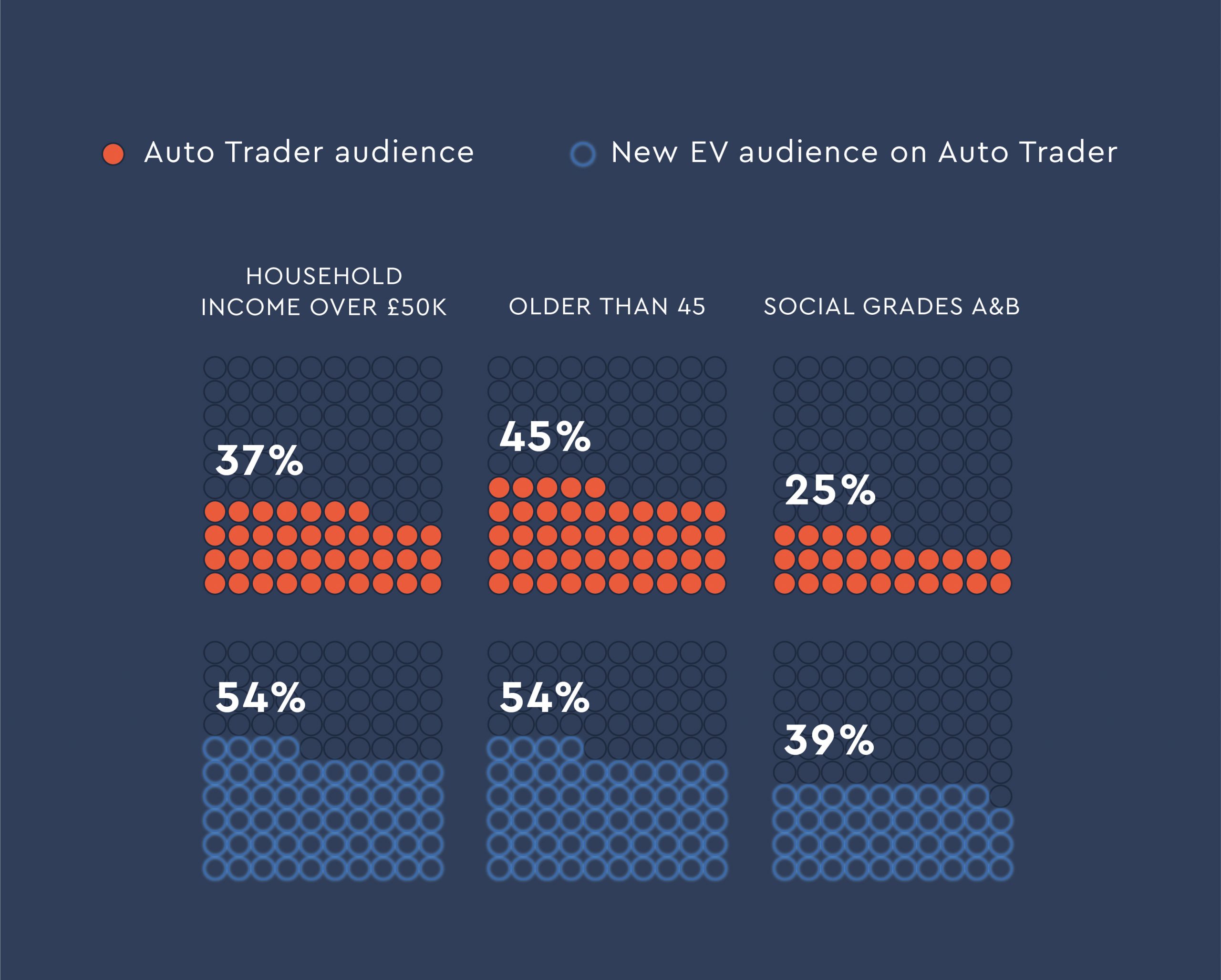
Number of EVs available
As previously mentioned, the 2035 ban announcement had a clear impact on consumers’ habits when it comes to purchasing or considering purchasing an electric vehicle.
The above graph shows the amount of EVs available to customers on Autotrader between the years 2019-2022. As with previous graphs, the increase in EVs came around 2020 (the time of the announcement), but it’s between quarter three of 2021 and quarter two of 2022 where the starkest rise is evident. Again, this is around the time of Russia’s invasion of Ukraine which started the initial increase in fuel prices.
Despite this, petrol and diesel cars remain the most popular by some distance.
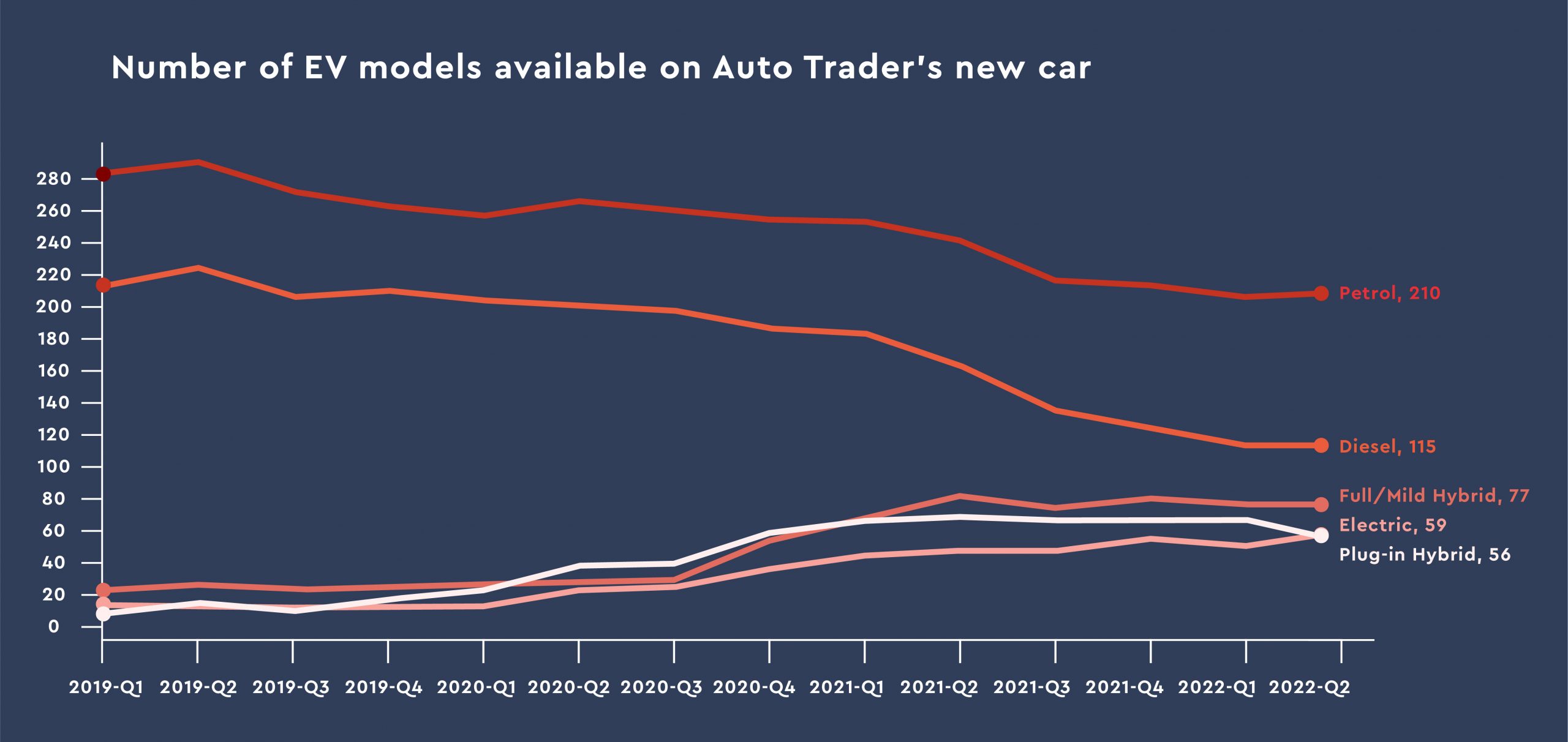
Electric vehicles and the second hand market
Due to the expensive nature of purchasing an electric car, many people may opt for a second-hand version. When looking at second-hand electric cars on Autotrader, the same trend can be seen as with the new vehicles.
The lines for EV stock, advertisement views and weekly leads have all increased due to a combination of the government ban and external factors.
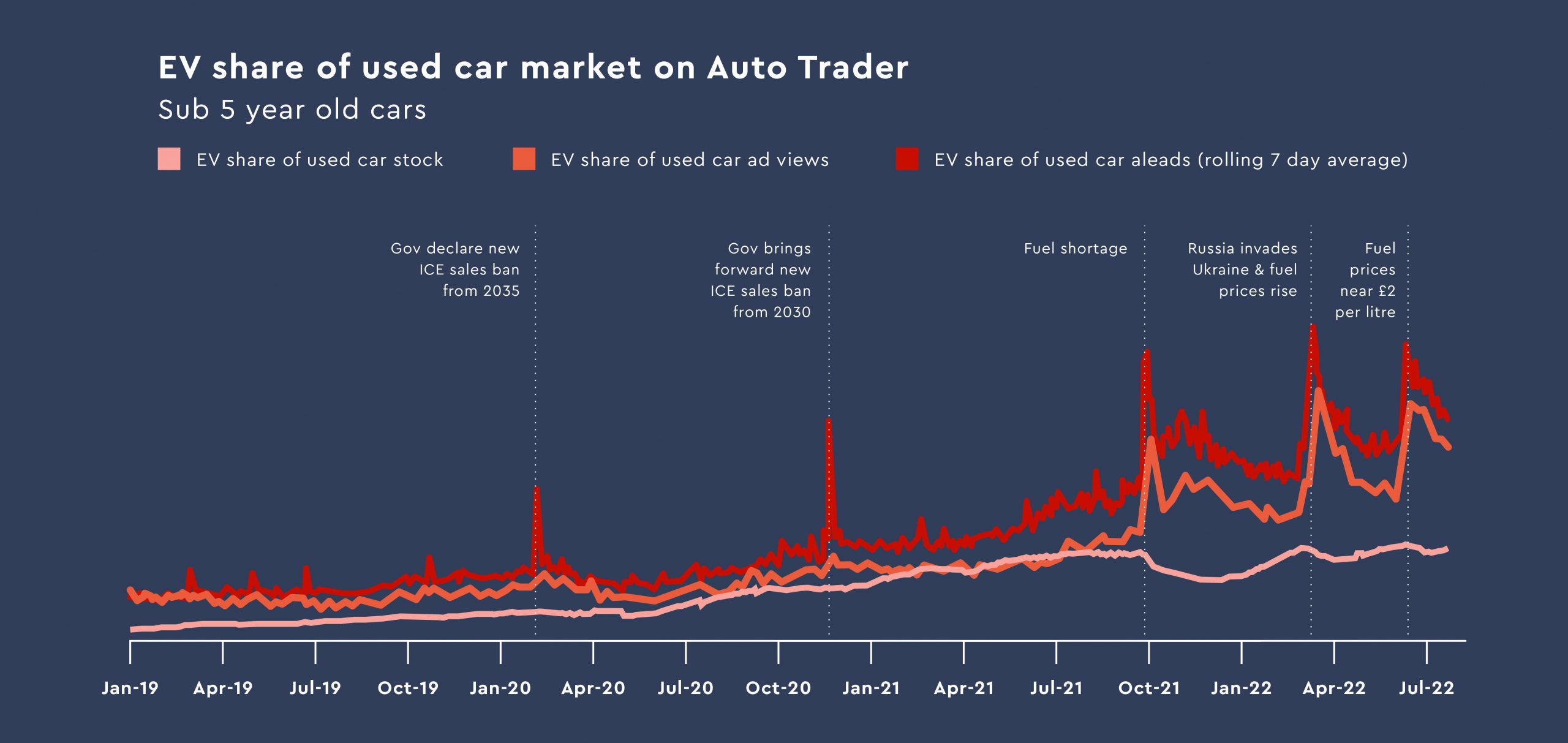
What is Augmented Reality HUD?
Designed to make driving a more comfortable and safer experience for everyone on the roads, Augmented Reality Head-Up Displays (HUD) refers to technology that beams a whole host of imagery onto car windscreens.
This includes 3D animations, text and images that provide safety information, warning signs, speed limits and more. These will allow drivers to quickly and easily digest key information when out on the road. The video above will explore Augmented Reality HUD in more detail.
The 6 Levels of Vehicle Autonomy
This video will take a look at the six levels of vehicle autonomy. Known as advanced driver-assistance systems (ADAS), this technology has grown significantly in recent years and looks set to develop even further.
Stretching from level 0 (no automation) to level 6 (full automation) ADAS systems provide the roadmap to fully autonomous cars in the future…
Vehicle Integration with Google Assist-Enabled Devices
These days, Google and similar devices are a part of many of our day-to-day lives. Voice activation technology can be extremely helpful in providing us with the information we need simply by asking our device a question.
ADAS Intelligent Speed Assistance
One of the new technologies that has been introduced within advanced driver-assistance systems, or ADAS, is intelligent speed assistance. Designed to lower the number of high-speed crashes on the road that lead to unnecessary fatalities, these systems are among several innovative safety features being introduced to modern cars.
In this video, we’ll take an in-depth look at intelligent speed assistance systems, outlining how they work and their future impact when it comes to driving
ADAS (Advanced Driver-Assistance Systems) Windscreen Camera Calibration.
Most vehicles that have been manufactured since 2016 will come with some kind of advanced driver-assistance systems (ADAS) in place. When you have a windscreen replacement or repairs undertaken, it’s important that these systems are properly recalibrated after the work has been completed.
In this video, we’ll take a look at the process and explain how here at The Windscreen Company, we’ll always make sure your cameras and sensors are performing at their best.
